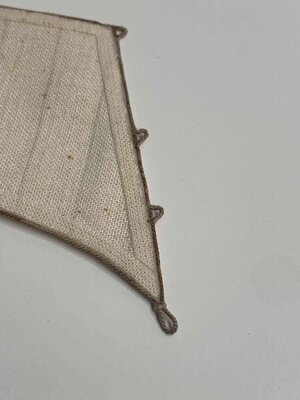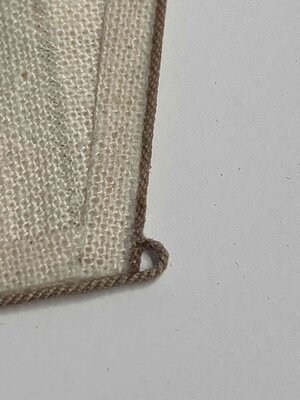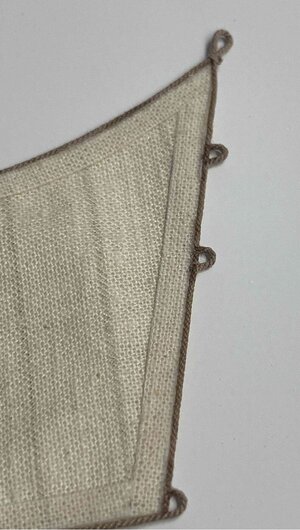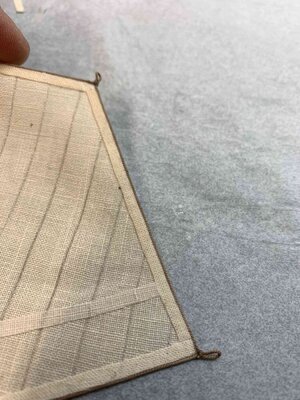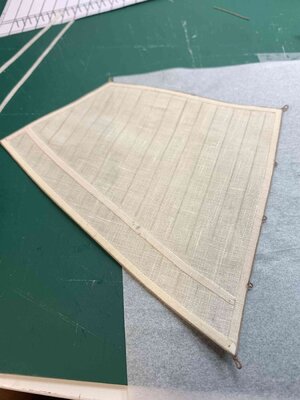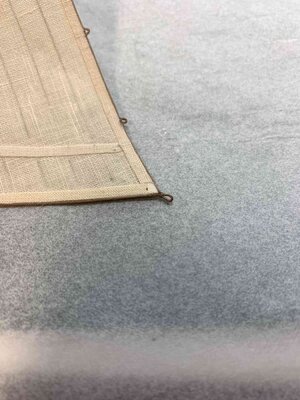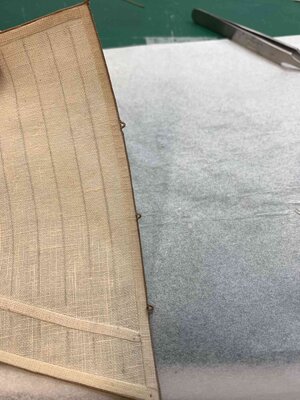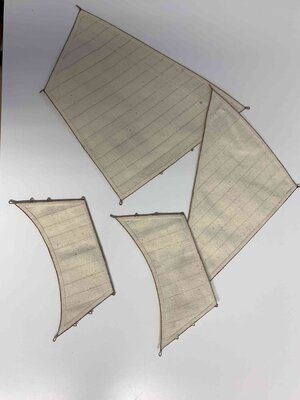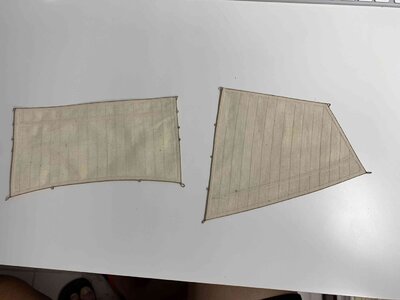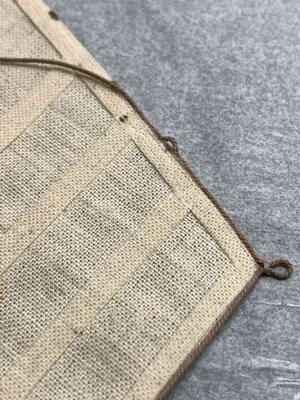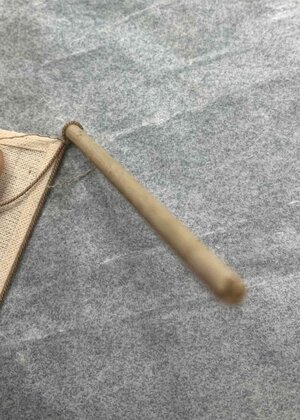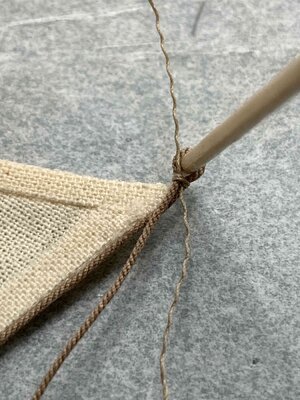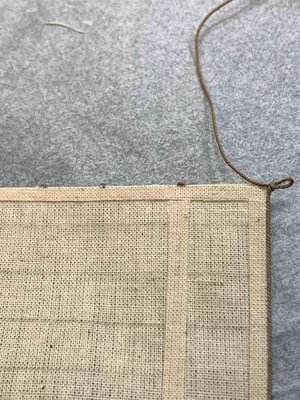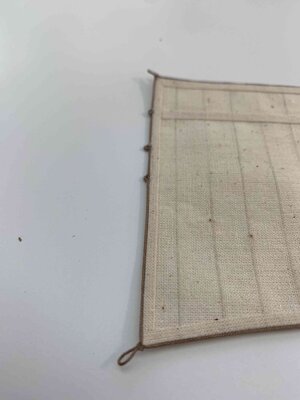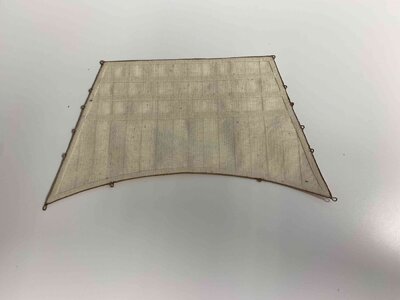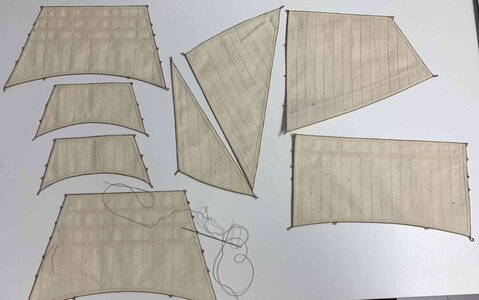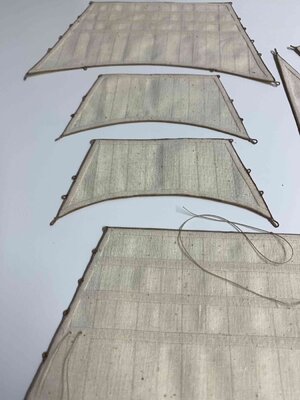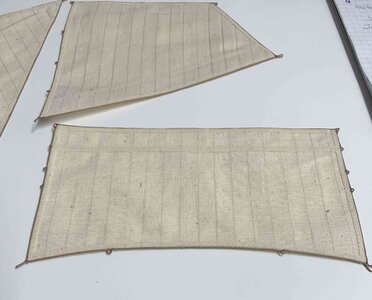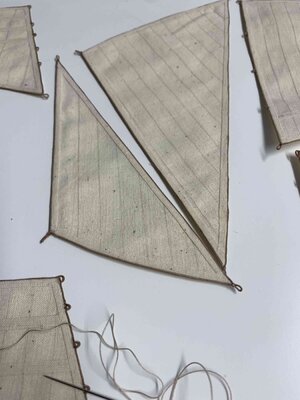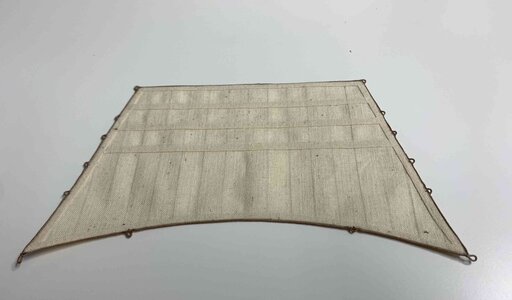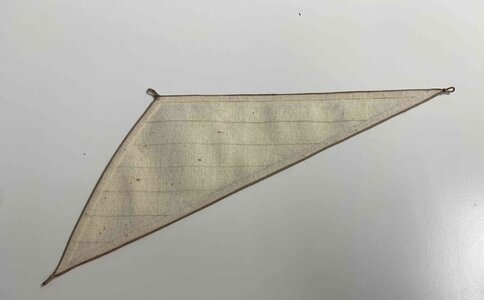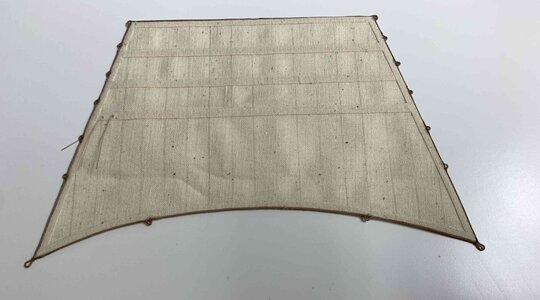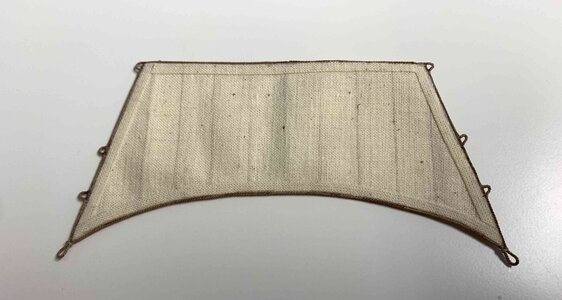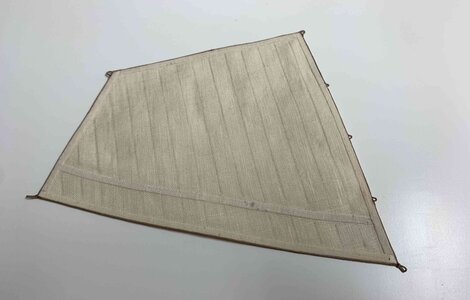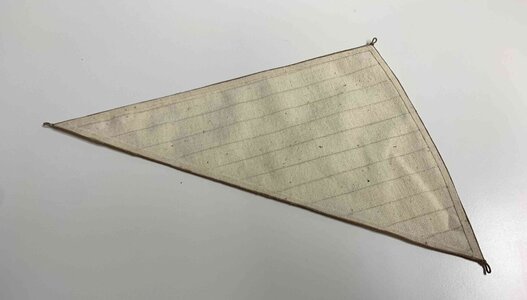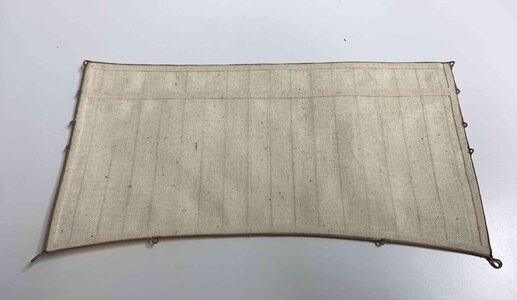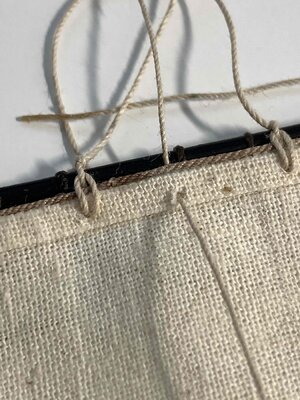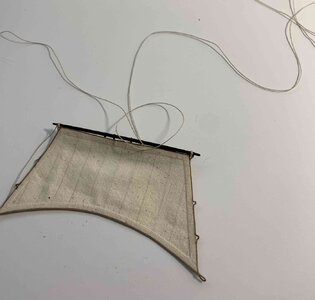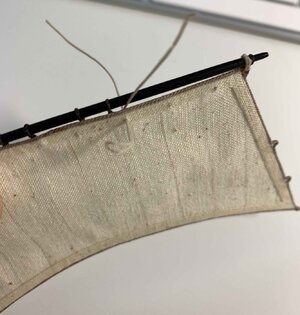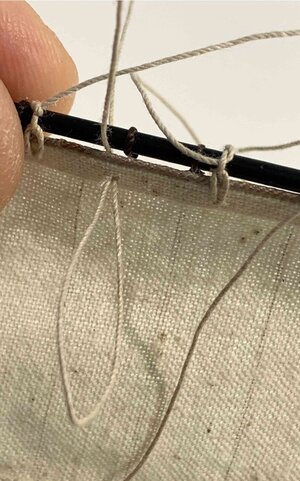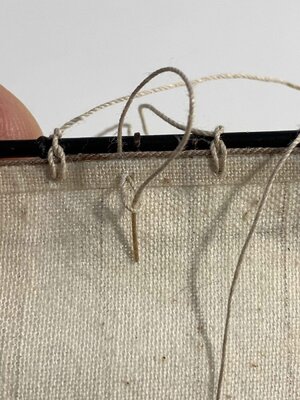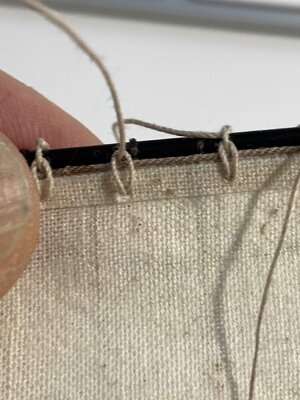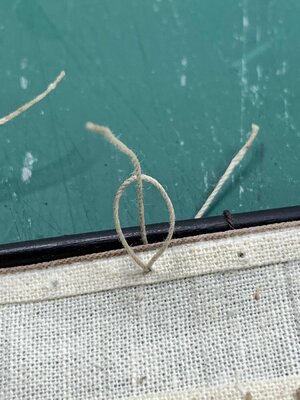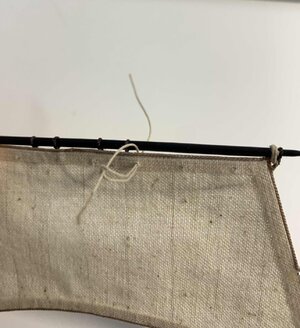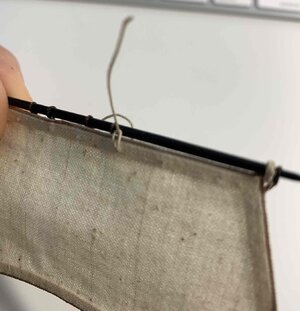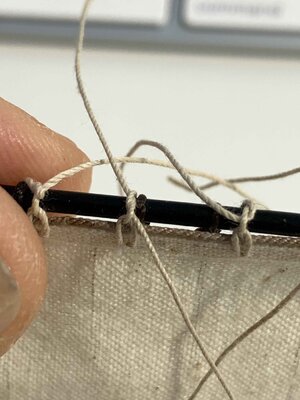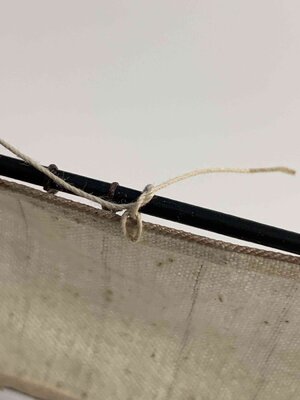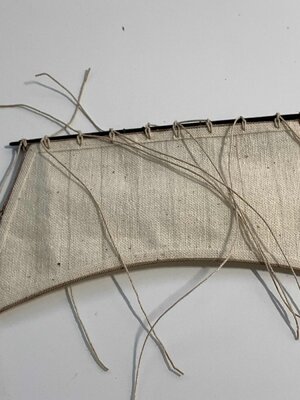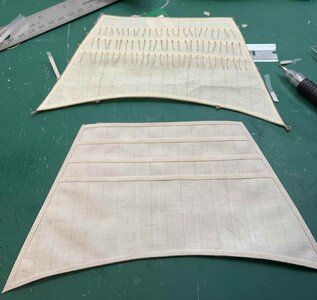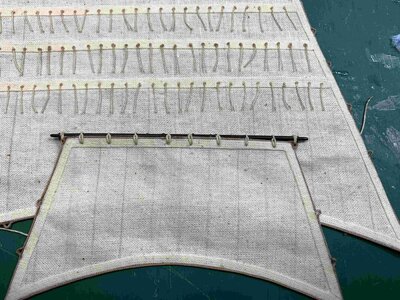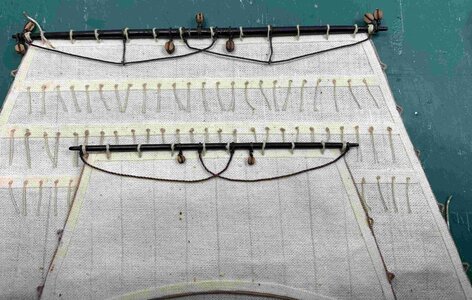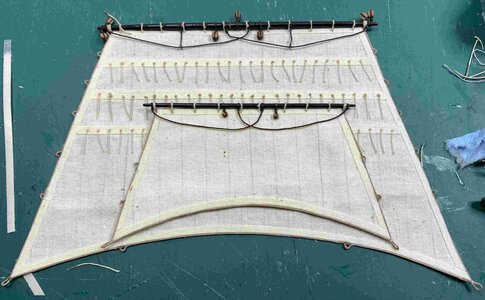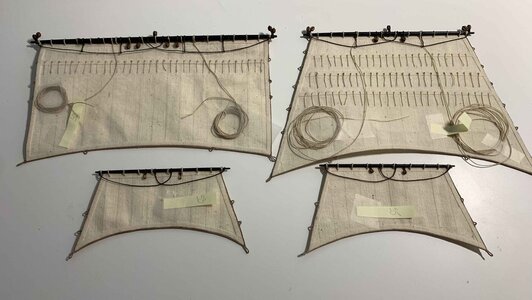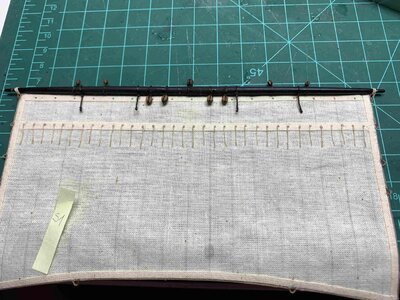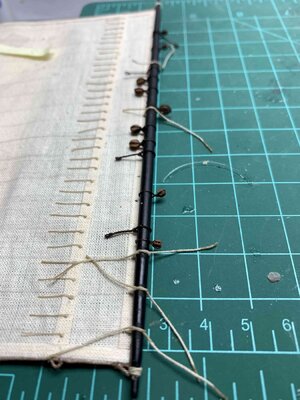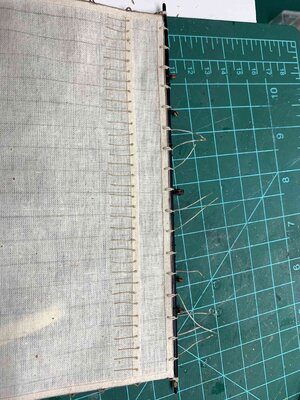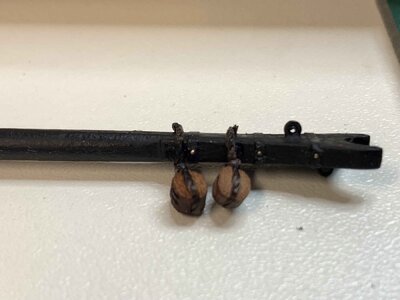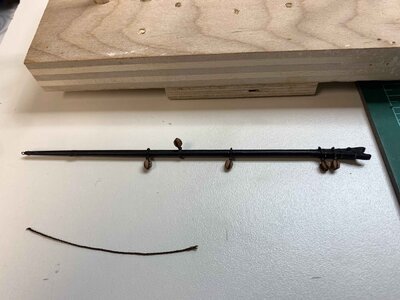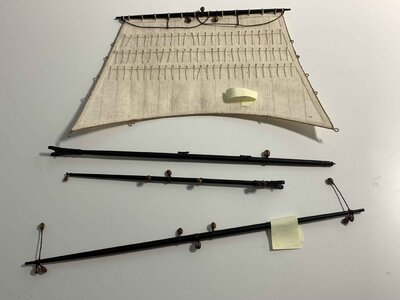Yes, you are correct, borrowing the knowledge and adding my own spices...Great tutorial, Moreplovac, many thanks! The way you making sails remind me of the method of many Russian ship modeling colleagues.
-

Win a Free Custom Engraved Brass Coin!!!
As a way to introduce our brass coins to the community, we will raffle off a free coin during the month of August. Follow link ABOVE for instructions for entering.
-
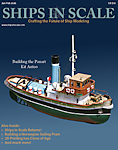
PRE-ORDER SHIPS IN SCALE TODAY!
The beloved Ships in Scale Magazine is back and charting a new course for 2026!
Discover new skills, new techniques, and new inspirations in every issue.
NOTE THAT OUR FIRST ISSUE WILL BE JAN/FEB 2026
You are using an out of date browser. It may not display this or other websites correctly.
You should upgrade or use an alternative browser.
You should upgrade or use an alternative browser.
Brigantine Phoenix, by Master Korabel [COMPLETED BUILD]
- Thread starter moreplovac
- Start date
- Watchers 47
- Joined
- Apr 20, 2020
- Messages
- 6,202
- Points
- 738

you are Achieving the most impressive progress, and you are doing a great job in preparing preparing the ship's sails! Well doneStill need to practice this technique, mostly on some bigger scale model... It turns out that with this way the amount of sail cloth provided in kit might not be sufficient. Also needs to practice on type/amount of glue used to glue strips together to simulate joining of two cloths..
View attachment 246578
View attachment 246601
Anyhow, the new material was located and in this case i will try simulating with a pencil line... I will also practicing with another sail cloth material and using "pulling the threads" technique for simulation overlapping seams..
View attachment 246600
Tracing the sails down...
View attachment 246599
Simulating overlapping seams..
View attachment 246598
Cutting strips that will be glued to the sail..
View attachment 246596
View attachment 246597
In order to protect the cloth from starting to tear apart, the cloth for strips was covered with diluted white glue, 50/50 with water, left overnight to dry and ironed before used. Then it was placed down, with material threads as vertical as possible. Then i put several strips of transparent scotch tape to prevent tear, very much the same reason of putting the scotch tap on veneer before cutting it...The strips are cut 3mm and 4mm wide.
I started with the longest run first... following the sail template..
View attachment 246595
I used white glue, not diluted to glue strips to the fabric. The scotch tape is pulled off easily once the glue settles down.
View attachment 246594
View attachment 246593
View attachment 246592
View attachment 246591
View attachment 246590
The sail is cut off..
View attachment 246589
The simulation lines have to be put on the back as well.. Two lines of scotch tape with measurements are put on the desk and the lines are run on the material..
View attachment 246587
View attachment 246588
Running out of strips and making the new bunch described above..
View attachment 246586
All sails completed.
View attachment 246585
Now it is time to run a boltrope, 4mm thick, using combination of cyano glue for a quick grab/hold and 50/50 diluted white glue running with the line, to make sure rope stays on..
View attachment 246584
View attachment 246583
View attachment 246582
View attachment 246581
View attachment 246580
View attachment 246579
Will continue tomorrow.
Happy modelling...
These are looking really good! Bravo!
I am echo Paul, love those sails! Great job!
Reef points installation process..
Mark it on the sail..
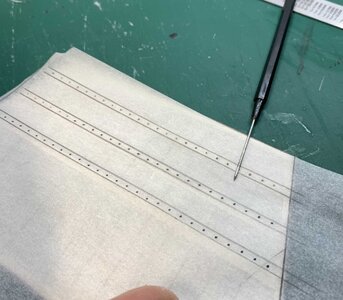
The knot was made on one end of the rope..
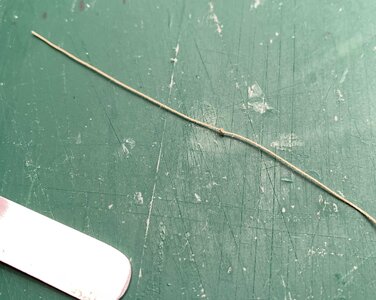
With needle it will be pushed through the sail.. if the hole is big enough, the reef line can be frozen with CA glue on one end and that end can be pushed thru the hole... this way no need for needle..
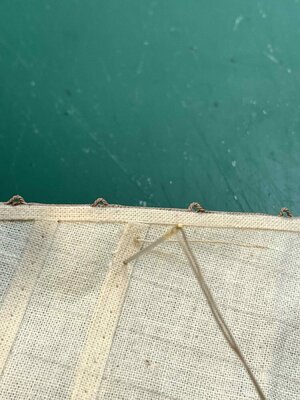
On the other side of the sail, the another knot was made..
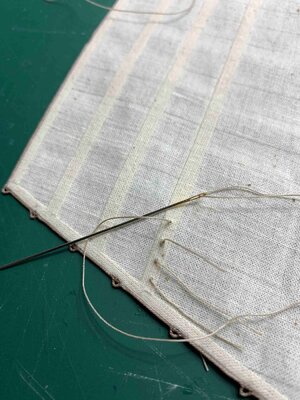
The string is pooled and the knot was finished on the sail..
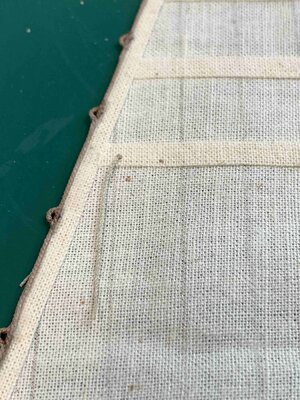

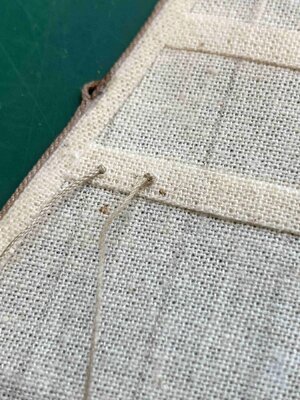

The knots were frozen with a drop of diluted PVA glue on each knot.. and dried with the hot gun (on lowest heat setting)...

Haircut time..
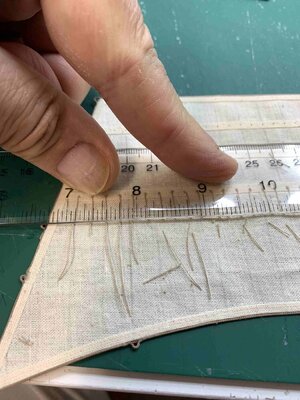
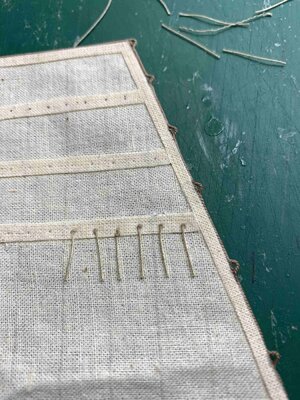
One row is completed..
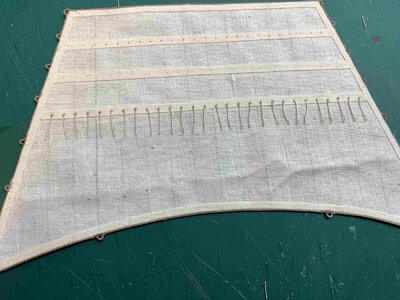
Happy modelling...
Mark it on the sail..

The knot was made on one end of the rope..

With needle it will be pushed through the sail.. if the hole is big enough, the reef line can be frozen with CA glue on one end and that end can be pushed thru the hole... this way no need for needle..

On the other side of the sail, the another knot was made..

The string is pooled and the knot was finished on the sail..




The knots were frozen with a drop of diluted PVA glue on each knot.. and dried with the hot gun (on lowest heat setting)...

Haircut time..


One row is completed..

Happy modelling...
Last edited:
- Joined
- Apr 20, 2020
- Messages
- 6,202
- Points
- 738

very accurate work, well doneReef points installation process..
Mark it on the sail..
View attachment 249081
The knot was made on one end of the rope..
View attachment 249080
With needle it will be pushed through the sail.. if the hole is big enough, the reef line can be frozen with CA glue on one end and that end can be pushed thru the hole... this way no need for needle..
View attachment 249079
On the other side of the sail, the another knot was made..
View attachment 249075
The string is pooled and the knot was finished on the sail..
View attachment 249073
View attachment 249071
View attachment 249069
View attachment 249068
The knots were frozen with a drop of diluted PVA glue on each knot.. and dried with the hot gun (on lowest heat setting)...
View attachment 249067
Haircut time..
View attachment 249066
View attachment 249064
One row is completed..
View attachment 249063
Happy modelling...


Kurt Konrath
Kurt Konrath
Putting in reefing lines is like tying the rat lines on shroud.
Done simple but often.
Your sail work is grand, and the sails will make an outstanding addition to the great ship you have built.
Done simple but often.
Your sail work is grand, and the sails will make an outstanding addition to the great ship you have built.
A bit of a white glue, diluted 50/50 to freeze the reef band...
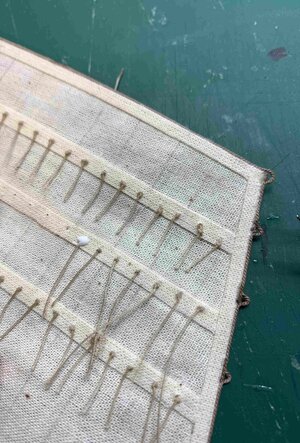
A bunch of reef lines were pre-cut, a knot was tight on one end and opposite end frozen with a drop of CA glue so it can easily go thru the hole..
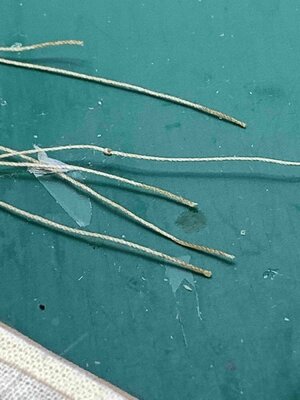
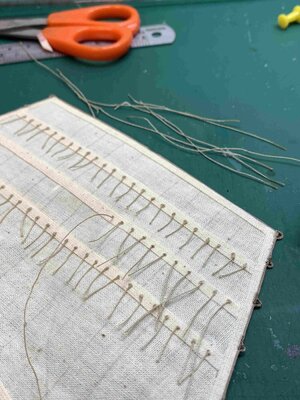
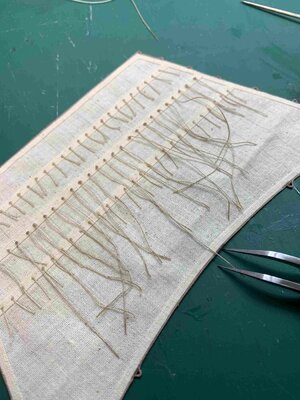
Once all lines with a knot were pushed thru the sail and secured with a drop of white glue, the work on opposite side started by making another knot... Then all lines were cut to the length..
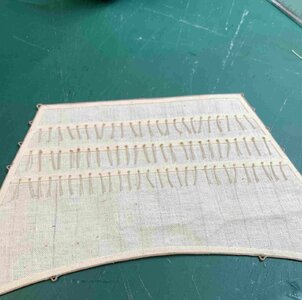
Just to break a bit from reef lines, started to work on attaching a sail to the yard....
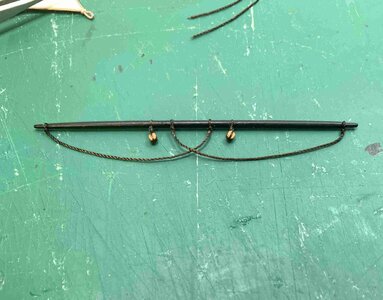
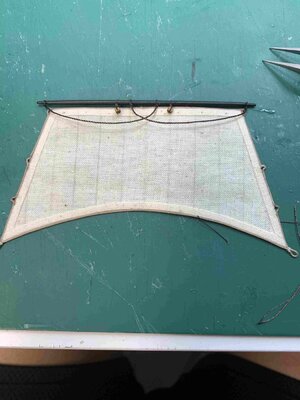
... first attaching the corners of a sail with a strangle knot...
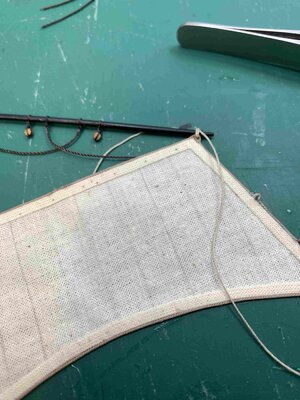
The holes for robands were also predrilled..
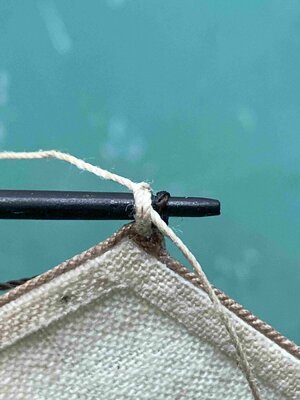

Then it becomes very hot in my little workshop so continue tomorrow...
Happy modelling...

A bunch of reef lines were pre-cut, a knot was tight on one end and opposite end frozen with a drop of CA glue so it can easily go thru the hole..



Once all lines with a knot were pushed thru the sail and secured with a drop of white glue, the work on opposite side started by making another knot... Then all lines were cut to the length..

Just to break a bit from reef lines, started to work on attaching a sail to the yard....


... first attaching the corners of a sail with a strangle knot...

The holes for robands were also predrilled..


Then it becomes very hot in my little workshop so continue tomorrow...
Happy modelling...
Working on blocks, different sizes, for different yards... a bit of serial production.
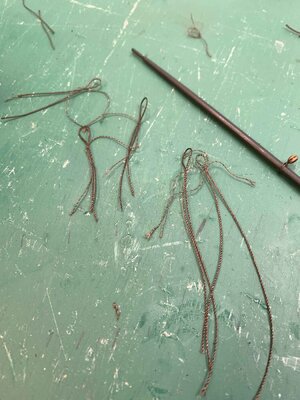
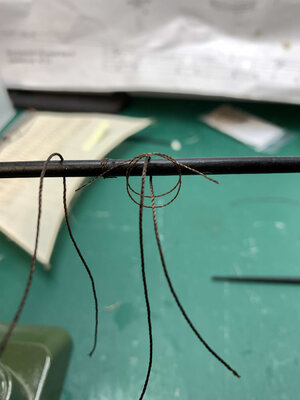
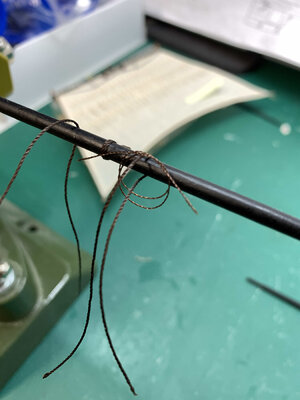
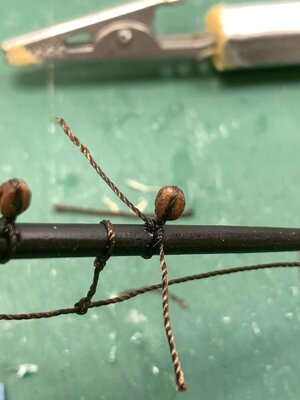
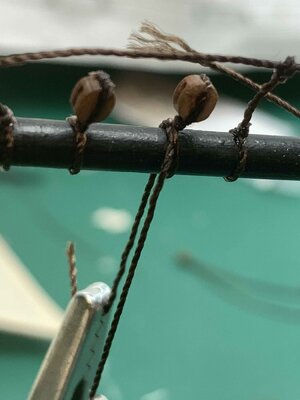
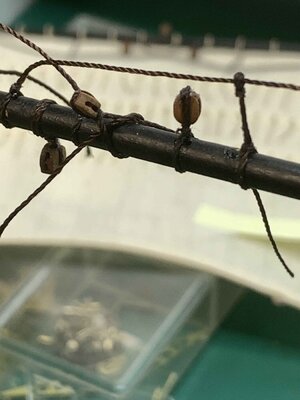
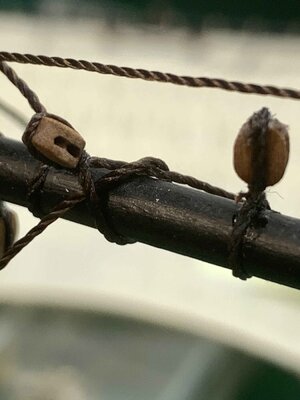
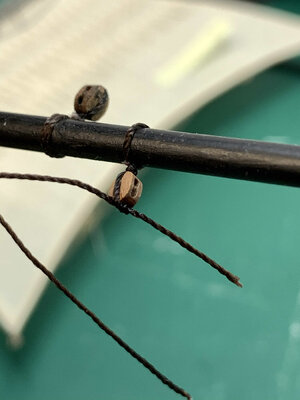

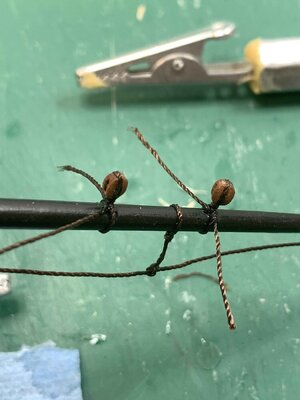
I used a bit of CA glue to freeze the block and now rope is slightly stiff; need to massage it so it will fit around the yard..
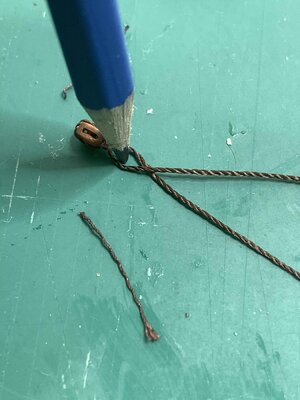
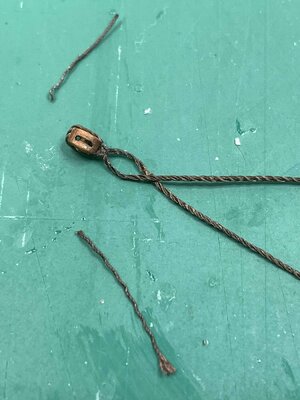
A foot rope is also installed; slightly different approach this time. First i made an eye...
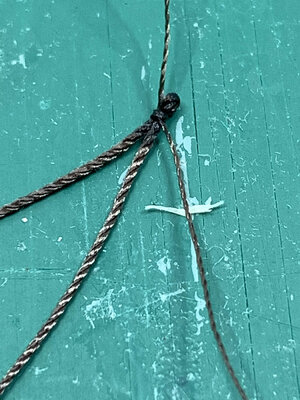
Cut it with extra length...
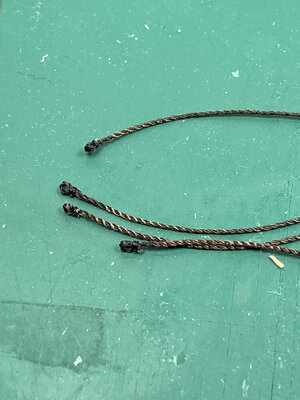
then drag the main rope line thru with a help from this fancy tool...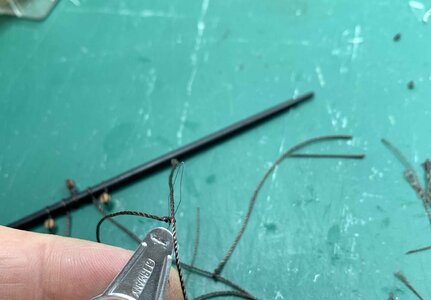
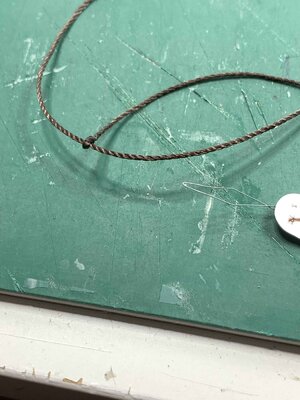
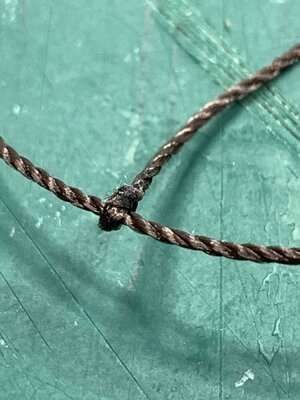
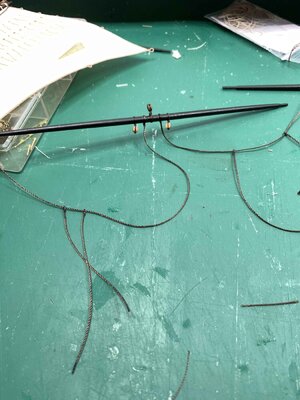
The the lines were tight to the yard in appropriate length..
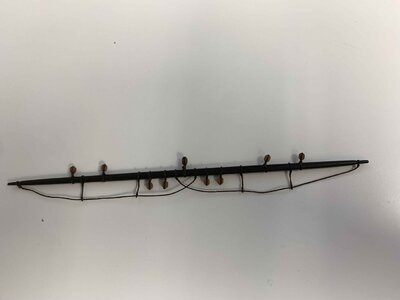
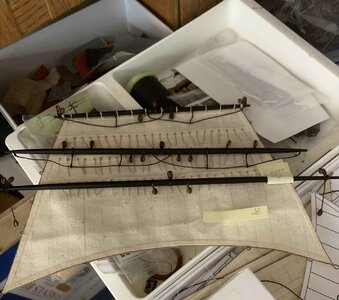
I will adjust foot rope to look a bit more realistic...
Happy modelling...










I used a bit of CA glue to freeze the block and now rope is slightly stiff; need to massage it so it will fit around the yard..


A foot rope is also installed; slightly different approach this time. First i made an eye...

Cut it with extra length...

then drag the main rope line thru with a help from this fancy tool...




The the lines were tight to the yard in appropriate length..


I will adjust foot rope to look a bit more realistic...
Happy modelling...
Last edited:
Marking the position of reef lines...
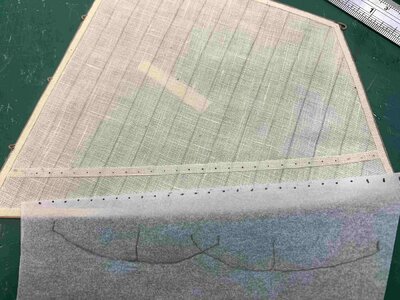
Production line, knot making process...
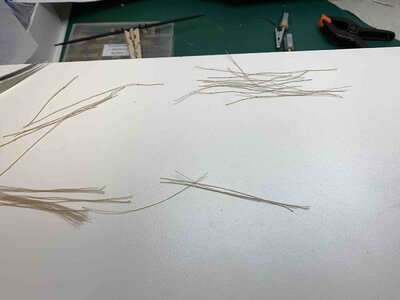
Freezing the top of a line with a drop of CA glue...
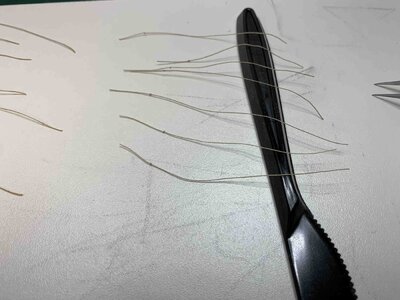
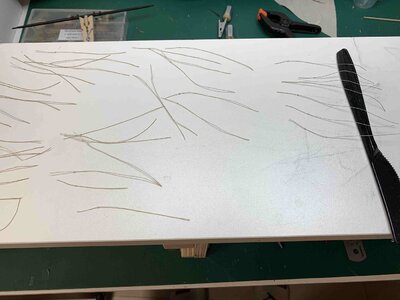
After making holes in the sail, the reef lines are pushed thru...
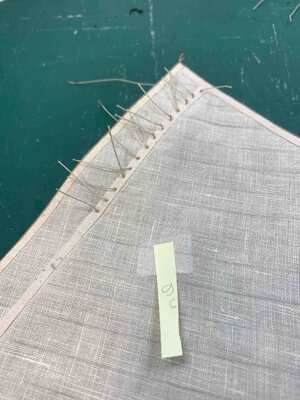
50/50 diluted white glue assist keeping the knot positioned...
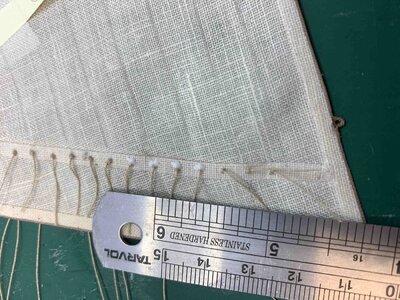
The ship cradle, once turned up side down, serves as a good, small table for tasks that require precision and patience.. this is part of making a knot on the other side of the line..
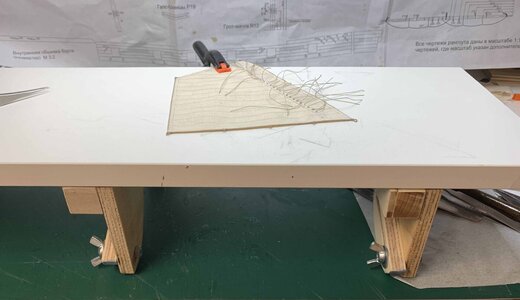
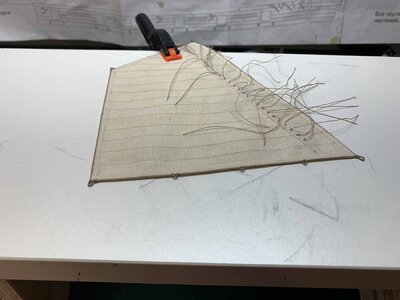

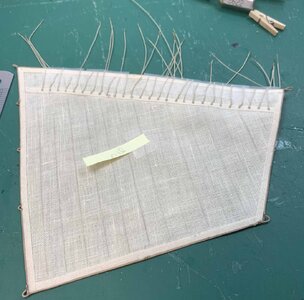
After reef lines haircut is done... few lines still need a bit of adjustment...
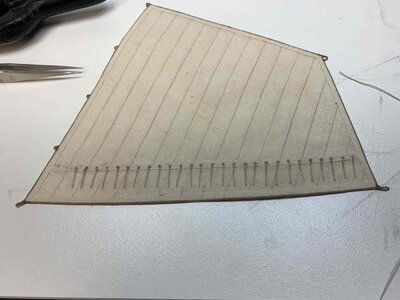
Next sail, S1..
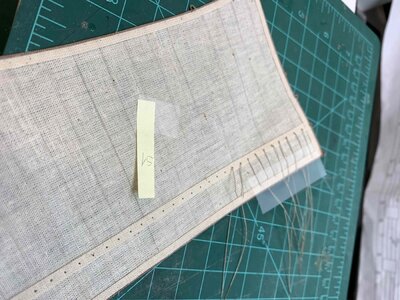
and completed...

Happy modelling..

Production line, knot making process...

Freezing the top of a line with a drop of CA glue...


After making holes in the sail, the reef lines are pushed thru...

50/50 diluted white glue assist keeping the knot positioned...

The ship cradle, once turned up side down, serves as a good, small table for tasks that require precision and patience.. this is part of making a knot on the other side of the line..




After reef lines haircut is done... few lines still need a bit of adjustment...

Next sail, S1..

and completed...

Happy modelling..
Making few 0.3mm ropes, using crochet lines and Golden oak stain. I usually cut the lines in 1mm length, deep one line at a time in the stain and pull it out, at the time i drop the whole line in the stain. This prevents a line to stay in the stain for too long. This allows me to somehow control the beige colour shade of the lines.. then let it dry for a day...
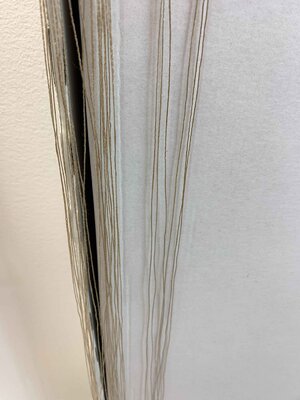
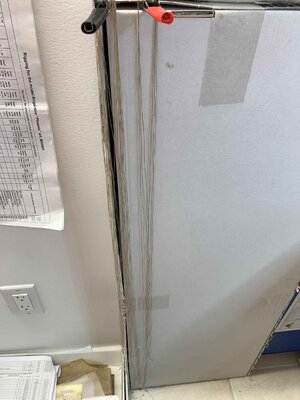
It is time to bring the model back on the table...
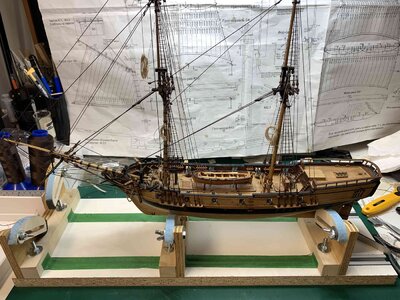
... and to replace the plan
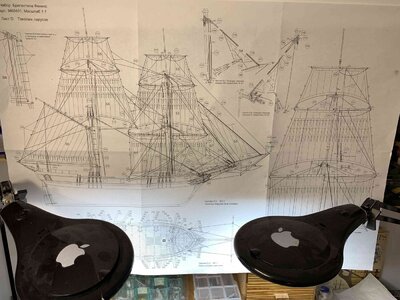
All sails appears to be done..
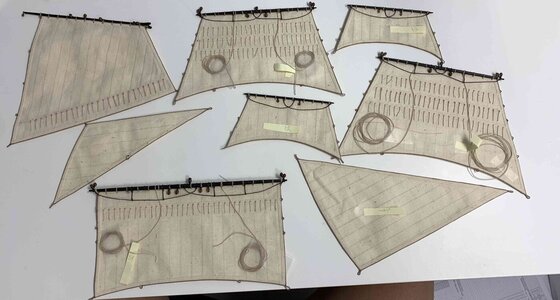
Work will start on a jib by making a holes for rings.. and making 7 rings in 3mm diameter. The rings are blackened and polished before mounted on the sail..
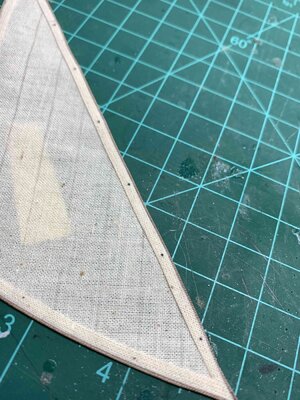
Then the sail is attached ...
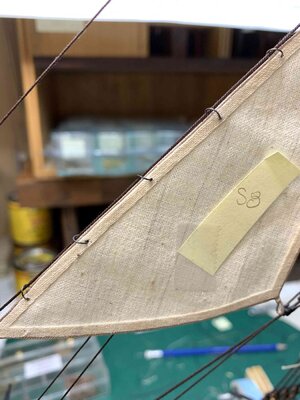
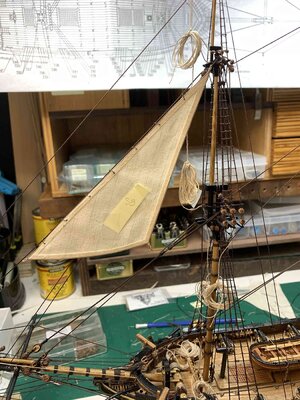
Then a tack cringle is attached to the parrel using a simple square knot. Next, the halyard is attached to the head of the sail..
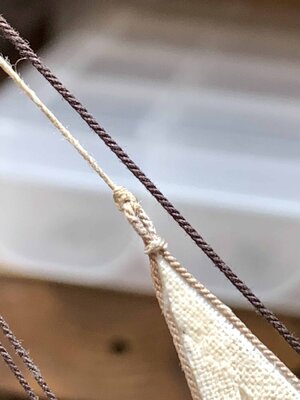
... and it will be tight to the cleat using a 3.5 mm block with an iron hook..
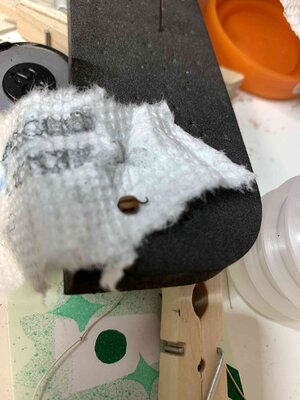
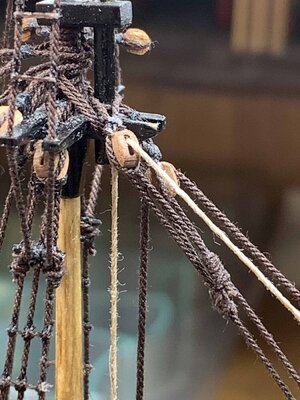
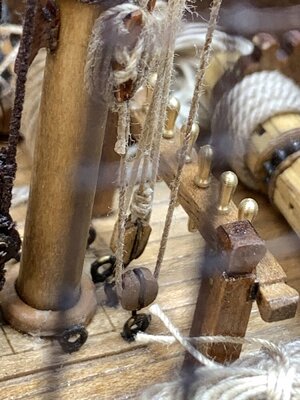
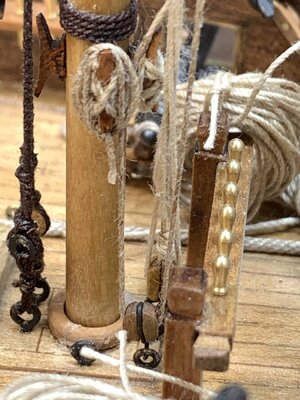
Happy modelling...


It is time to bring the model back on the table...

... and to replace the plan

All sails appears to be done..

Work will start on a jib by making a holes for rings.. and making 7 rings in 3mm diameter. The rings are blackened and polished before mounted on the sail..

Then the sail is attached ...


Then a tack cringle is attached to the parrel using a simple square knot. Next, the halyard is attached to the head of the sail..

... and it will be tight to the cleat using a 3.5 mm block with an iron hook..




Happy modelling...
Moreplovac, I warned you earlier about this tackle. There is an error in the drawings and instructions. This tackle must be removed along with the block. I moved it to the right of the mast. It will prevent you from setting foresail with a sail, and foresail topsail. Your sail will rest against this tackle and will not be able to fill with wind.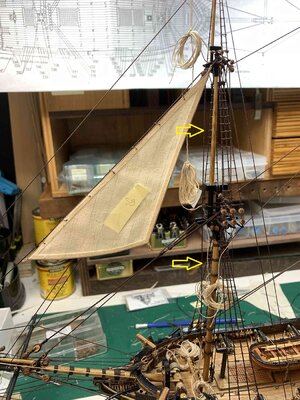

Do you have a picture to share?Moreplovac, I warned you earlier about this tackle. There is an error in the drawings and instructions. This tackle must be removed along with the block. I moved it to the right of the mast. It will prevent you from setting foresail with a sail, and foresail topsail. Your sail will rest against this tackle and will not be able to fill with wind.View attachment 256229



